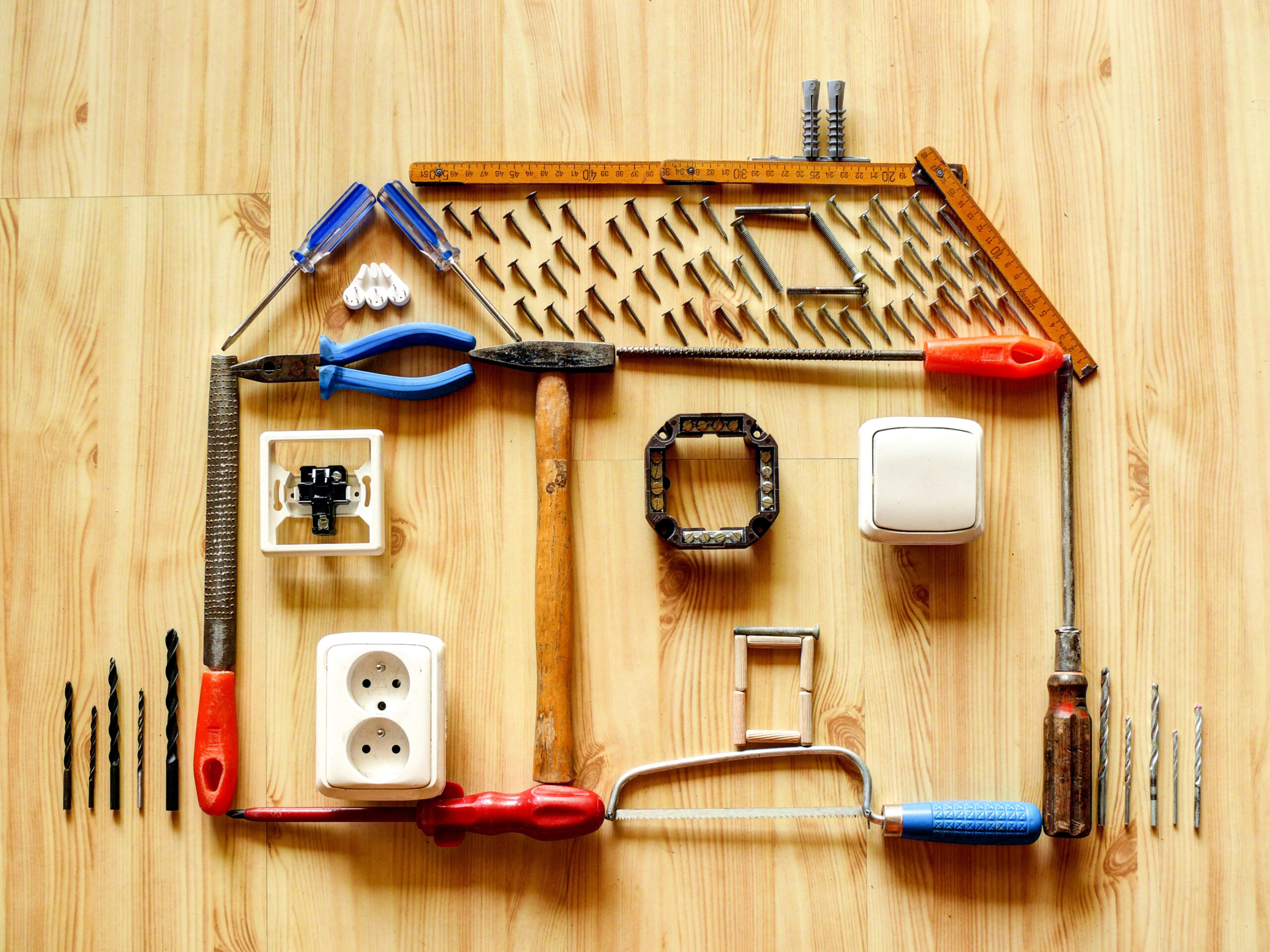
Is emergency planning just too scary?
Is emergency planning just too scary?
Have you put off emergency planning because the thought of serious disaster is too scary? Our local authorities advise having 3 days of water, food, and supplies on hand and a list of other emergency items. And yet, only 30-40 percent of us do this, according to Pierce County Department of Emergency Management.
The most likely disaster scenarios in the Northwest are power outages and storm flooding. The non-profit group Take Winter By Storm. www.takewinterbystorm.org has a list of tips for creating your storm plan. Even just doing the basics of this plan is better than nothing – so don’t be overwhelmed that they have a lot on their many checklists.
In addition to water/food/first aid and a communications plan, they do recommend some preventive actions to get your house ready to weather the storms of winter. We think this is important not only for storm preparation but general maintenance of your house – and your personal comfort.
Here are the highlights from their list, and you can see the full list on their website under home maintenance checklist. These tips can help limit damage to your home, even without a big 100 year storm.
- (We think this is the most important one on the list) Locate the electric, gas and water shut off valves in your house. Keep tools needed near gas and water shut offs and teach family members how to turn off utilities. If you turn the gas off, a utility representative must turn it back on.
- Inspect insulation in your attic and crawl space. Seal areas around recessed lights, attic hatch, plumbing vents that may allow warm air to enter the attic.
- Clean gutters and drains. Direct them away from the foundation and from walkways or driveways to prevent ice.
- Check Doors and Windows for cold air coming in that may compromise your heating efficiency. Weather strip doors. Replace caulk and weather stripping that has lost contact with surfaces.
- Check roof for loose or damaged shingles and make sure flashing is secure around vents and chimneys.
- Plumbing pipes near outer walls or in attics and crawl spaces can be susceptible to freezing. (This is especially true for mobile homes where pipes are exposed under the house.) Insulate exposed pipes to protect them from bursting.
- Cover outdoor faucets or replace with frost proof models. (Faucet covers are usually less than $5 and available at local hardware stores.)
- Check your water heater, (or if in doubt get it inspected by a water heater company.) Most tank water heaters last 8-12 years. Wet spots on the floor or a rusted tank may be signs of a problem. Make sure your tank water heater is located near a floor drain.
- Have professionals check your heating or cooling system. Consider having your air ducts cleaned and filters replaced.
- Check siding, soffits, walls and flashing for damage or looseness and secure.
- Check foundations for signs of settling, such as bulging or shifting. Have a professional inspect cracks more than 1/8 in wide. Check siding and foundation for openings where pests can enter and seal up.
- Keep snow build up off of surfaces that could collapse.
- Test your sump pump to make sure it works. If you are in an area that floods and has frequent power outages, consider installing battery operated backup sump pumps.
- Check smoke and carbon monoxide detectors.
You know that old “ounce of prevention makes a pound of cure” saying. We’re here to help. Washington Energy Services provides many of the preventive products and services mentioned by Take Winter By Storm’s checklist, and in case of trouble, call us 24/7 for Emergency service for plumbing, water heater and heating emergencies. Call us at 800-398-4663.
Related products
Suggested Reading
- 2016
- AC
- AC Installation
- AC Units
- AFUE
- air conditioing
- air conditioner
- air conditioning
- air conditioning maintenance
- air conditioning service
- air conditioning tune-up
- air duct
- air duct cleaning
- air handlers
- air pollution
- Air Purification System
- air purifier
- Air Sealing
- angie's list
- award
- basement Finishing
- Bathroom remodel
- BBB
- BBB Accredited Business
- before and after
- Best air conditioner
- best filters
- best generator
- best locks
- best water heater
- best window install
- boilers
- bryant
- Bryant AC
- bryant furnace
- bryant heat pump
- christmas lights
- clean air
- clothes drive
- Clothes For Kids
- coat drive
- combi-boiler
- comfort
- community
- Construction
- contractor
- contractors
- Cooling
- Cooling equipment
- Coronavirus Protection
- custom
- daikin
- deals
- discounts
- DIY
- Donation
- Donations
- door hardware
- door installation
- door replacement
- Door Transformations
- doors
- drafty home
- drain cleaning
- Duct Cleaning
- Duct Cleaning Services
- ductless
- Ductless heat pump
- ductless heat pump. mini-split
- Ductless heat pumps
- ductless heating system
- ductless heating systems
- ductless installation
- Ducts
- earth day
- eco friendly
- EER
- election
- electrical inspection
- emergency
- energy
- energy conservation
- energy efficiency
- energy efficiency rebates
- energy efficient AC
- energy efficient air conditioner
- energy efficient home
- energy efficient hvac
- energy efficient HVAC Systems
- energy efficient windows
- energy myths
- energy saving
- energy saving home products
- energy star
- energy tax credit
- environmentally friendly
- exterior doors
- fall
- fall weather
- fiber cement
- fiberglass doors
- filter
- filter change
- financing options
- fireplace
- fireplace insert
- fireplace repair
- fireplace tune-up
- front door
- furnace
- furnace filters
- furnace install
- furnace maintenance
- furnace mileage
- furnace problems
- furnace replacement
- furnace service
- furnaces
- Garage door replacement
- gas fireplace
- gas fireplace inserts
- Gas Fireplace Makeover
- gas furnace
- generators
- going green
- good business practices
- green solutions
- Guardian Maintenance Club
- heat
- heat pump
- heat pump installation
- heat pump maintenance
- heat pump vs ac
- Heat Pumps
- heat pumps maintenance
- heat wave
- Heating
- Heating and Cooling equipment
- heating and cooling systems
- Heating Brands
- Heating Control
- Heating equipment
- Heating System Tuneup
- heatwave
- HEPA filter
- history
- holiday
- home
- home buyer
- home energy
- home energy efficiency
- Home energy efficiency solutions
- home exterior
- home heating
- home improvement
- Home Improvement Rebates
- home improvement repair
- home inspection
- home maintenance
- home maintenance checklist
- home maintence
- home performance
- home protection
- home repair
- home safety
- home upgrade trends
- home upgrades
- home value
- homeowners
- honeywell
- hot water
- hot water heater
- houzz
- how to
- HVAC
- HVAC Contractor
- HVAC Contractors
- hvac system
- IAQ
- indoor air quality
- infographic
- install
- install furnace
- insulation
- intellihot
- interior doors
- kids
- Kitchen face lift
- LED light
- LED lights
- light bulb
- light bulbs
- locks
- mailbag
- maintenance
- march
- membership
- mini-split
- modulating furnace
- money saving
- money savings
- navien
- new door installation
- new home
- New homeowner
- new windows
- news
- pacific northwest weather
- patio doors
- pets
- plumbing
- plumbing inspection
- power
- power outages
- precision tune up
- preventative
- Pro Tips
- Programmable Thermostat
- Programmable Thermostats
- propane
- PSE Award
- PSE Energy
- PUD
- Q & A
- Ratings
- rebates
- refund
- REME Halo
- Remodel
- remodeling hacks
- Replacing Heating System
- reputation
- Safe Home Insulation
- sale
- save energy
- Saving money
- scam
- scams
- seattle
- Seattle Weather
- SEER
- service
- services
- Siding
- Siding replacement
- sliding glass doors
- Smart Home
- Smart thermostat
- smoke
- Solar Attic Fan
- solar power
- Solar Powered Light Strand
- sound
- spring
- standby generators
- storm doors
- summer
- summer fires
- Summer heat
- Summer home
- super service 2016
- tank water heater
- Tank water heaters
- tankless tune ups
- tankless water heater
- tankless water heaters
- tax rebate
- thanksgiving
- Thermostat
- tips
- trends
- tune-up
- upgrade
- upgrade cooling
- upgrade heating
- utilities
- utility rebates
- veterans
- Washington Energy
- washington energy services
- water conservation
- Water Heater
- water heater installation
- water heater maintenance
- water heater repair
- water heaters
- water leak protection
- Wildfire Season
- wildfire smoke
- window
- window energy efficiency
- window install
- window maintence
- window remodel
- window repair
- window replacement
- windows
- winner
- winter
- zone heating
- Air Conditioning
- Air Purifiers
- Cooling
- Doors
- Ductless heat pump
- Environmental
- Fireplace
- Furnace
- Gas fireplace
- Generators
- Heat pump
- Heating
- Home improvement
- How to
- HVAC
- Indoor Air Quality
- Insulation
- News
- Plumbing
- Rebates
- Seattle
- Service near you
- Siding
- Smart Home
- Tank water heaters
- Tankless water heaters
- Tips to save money
- Uncategorized
- Wildfire Season
- Windows

